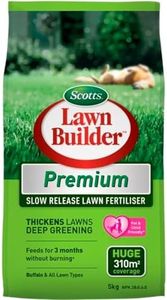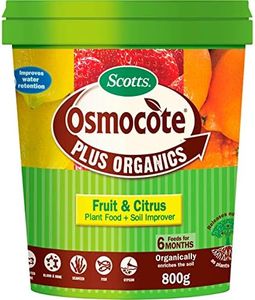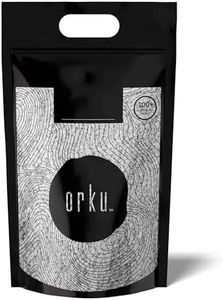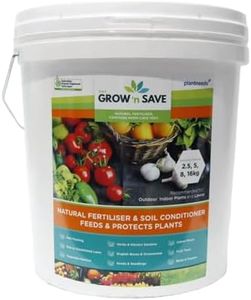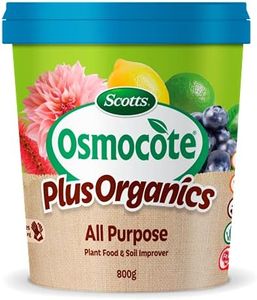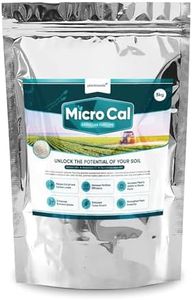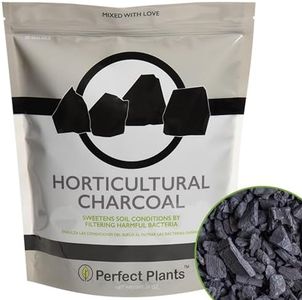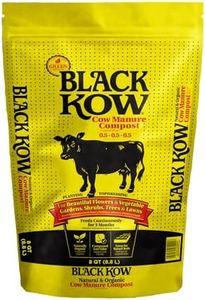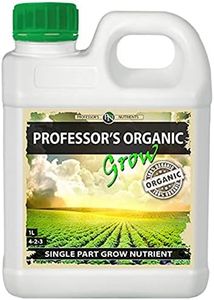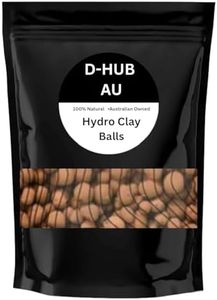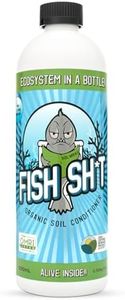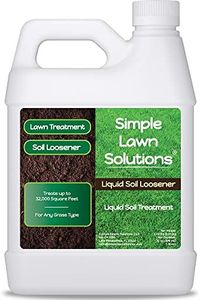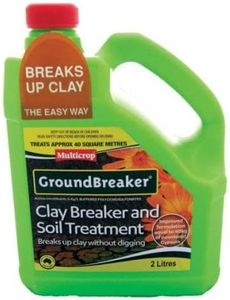We Use CookiesWe use cookies to enhance the security, performance,
functionality and for analytical and promotional activities. By continuing to browse this site you
are agreeing to our privacy policy
10 Best Soil Conditioner
From leading brands and best sellers available on the web.By clicking on a link to a third party's website, log data is shared with that third party.
Buying Guide for the Best Soil Conditioner
Choosing the right soil conditioner is key for healthy plants, whether you’re gardening in your backyard or managing a bigger landscape. Soil conditioners improve the physical qualities of soil, making it easier for roots to grow and for water and nutrients to reach your plants. Not all gardens or soil types need the same conditioners, so understanding your soil’s current issues—like if it’s too compact, drains too quickly, or lacks nutrients—should guide your choice. The right product can turn average soil into the perfect foundation for your plants.Soil Type CompatibilityThis is about whether the soil conditioner is suitable for your specific soil, such as clay, sandy, or loamy soil. Some conditioners work best with heavy or compacted clays, while others help sandy soils hold moisture. Knowing your soil type allows you to pick a conditioner that targets your soil’s particular needs, so test your soil first or observe if water pools or drains too quickly, and then pick a product formulated for those conditions.
Organic vs. Inorganic IngredientsSoil conditioners can be made from organic materials like compost, peat, or manure, or from inorganic substances such as gypsum or perlite. Organic conditioners feed both the soil and the microbes within, slowly improving the soil structure over time; these are great for long-term soil health. Inorganic conditioners, meanwhile, tend to solve specific issues quickly like breaking up hard clay or improving drainage. If you value natural, long-term improvement, choose organic; if you need to address a particular problem fast, consider inorganic solutions.
Nutrient ContentSome soil conditioners add essential nutrients, while others mainly change the texture or structure without much fertilizing impact. If your soil is already nutrient-rich, you might need only a conditioner that improves texture. But if your plants are stunted or pale, you may need a conditioner that also provides nutrients. Read the packaging or product description to see if it includes things like nitrogen, phosphorus, or potassium, and choose based on your plants’ health and your soil’s current fertility.
Water Retention and Drainage ImprovementWater-related issues are common in soil: either it holds too much water (leading to soggy roots) or drains too fast (so plants get thirsty). Some conditioners help soils hold more water—good for sandy, fast-draining soils—while others help excess water drain, best for heavy clays. To choose the right one, notice whether your plants often look waterlogged or too dry and match the conditioner to your needs. A moisture-retaining conditioner is best for drought-prone sites, while a drainage-improving product suits wet, sticky soils.
Particle Size and TextureConditioners come in fine, powdery forms or chunky, bark-like textures. Finer types blend quickly into the soil and work fast, ideal for quick fixes or smaller garden beds. Coarser products aerate soil more and last longer, making them well-suited for ongoing care in larger spaces. Think about whether you need an immediate change (go fine) or a slower, longer-lasting improvement (go coarse).
pH Adjustment AbilitySome soil conditioners can alter the pH of your soil, making it more acidic or alkaline. Most plants prefer a neutral pH, but some need more acidic or basic soil to thrive. If you notice stunted growth or yellowing leaves despite regular care, pH could be the culprit. Test your soil’s pH first, and if it’s too far from what your plants like, select a conditioner that will help correct it (such as lime for acidity or sulfur for alkalinity).
